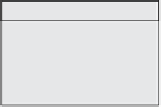Database Reference
In-Depth Information
The flowchart for the
Accounts Payable Month End Close
process is automatically
generated by Oracle Tutor, which is shown in the following figure:
Accounts Payable Month End Close
A
Establishing Close
Schedule
AP Clerk
AP Clerk
- Determine whether GL
account distribution
errors exist. (10)
AP Clerk
- Correct account
distribution errors. (13)
> Window Name
- Notify AP Supvr that all
checks accounted for.
(4)
Start
AP Clerk
- Determine whether any
checks unaccounted for.
(1)
> Window Name
AP Supvr
- Verify that all requests
for payment hav been
vouchered. (5)
- Verify that all manual
checks have been
recorded. (6)
- Verify that documents
have been processed. (7)
- Close AP transactions
for fiscal month. (8)
AP Clerk
- Inform AP Supvr that
account distribution
errors have been
corrected. (14)
Distribution
errors exist?
N
B
C
B
Y
N
Checks missing?
AP Supvr
- Identity errors on AP
/general ledger entry
report. (11)
- Deliver annotated report
to an AP Clerk for
correction. (12)
AP Supvr
- Print a list of aged
AP balances & a listing
of all checks written
during month. (15)
> Window Name
> Window Name
A
C
Y
AP Clerk
- Locate missing checks.
(2)
- Void missing checks.
(3)
AP Supvr
- List all of GL account
entries made during
month. (9)
> Window Name
B
Risks and controls documents
A risk is a possibility of acts or events that could adversely impact an organization's
business process. Risks also provide the source for designing the controls that
mitigate damage, which could be caused by the risks and a control mitigates
the potential damage from a risk for a specific business process. For each risk
documented for a process, there must be a documented control. Controls provide a
safety mechanism to ensure that all risks are addressed by documented responses
that mitigate the risks.
Risks and controls documents are generally maintained as a matrix of each
business process that link the risks to the business process and describe who,
how, and when the controls mitigate risks. The matrix also contains detailed
risk characteristics—such as likelihood, impact, and type—as well as controls
characteristics—such as control objectives, frequency, type, and method. Control
documents required for compliance with Sarbanes-Oxley Act also include control
assertions that are linked to the Committee of Sponsoring Organization's (COSO)
Integrated Internal Control Framework.




































Search WWH ::

Custom Search